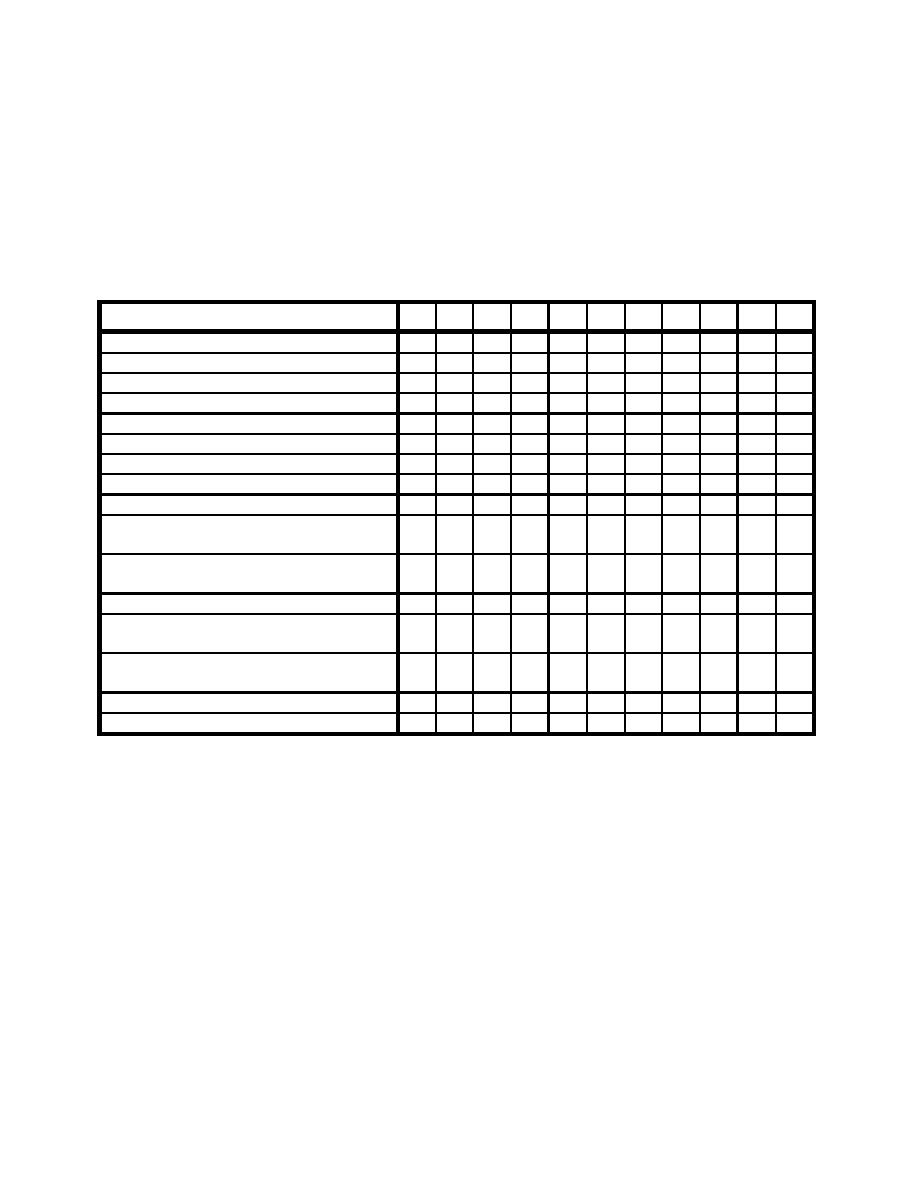
7.3 Typical Operation:
A. The following table is provided to identify the typical operation required by the respective fire
alarm systems. A table similar to this should be added to the contract documents to indicate
the specific operation required of the system. The output required for each specific input is
identified in the section below the table.
TABLE 7.3 Fire Alarm System Input Output Matrix
Input Device ⇓
Output ⇒
1
2
3
4
5
6
7
8
9
10
11
Duct Smoke Detector
X
X
X
X
Area Smoke Detector
X
X
X
X
Door Release Smoke Detector
X
X
X
X
X
X
Elevator Smoke Detector
X
X
X
Manual Pull Station
X
X
X
X
X
Elevator Machine Room Heat Detector
X
X
X
X
Generator Room Heat Detector
X
X
X
X
Sprinkler Waterflow / Pressure Switch
X
X
X
X
X
Water Control Valve Tamper
X
Fire Pump (Any alarm condition required
X
by NFPA 20)
High/Low Pressure Dry-pipe Sprinkler
X
System
Kitchen Hood Suppression System
X
X
X
X
X
Gas Extinguishing Systems (existing only -
X
X
X
X
new systems not allowed)
Dry Pipe Valve Room Temperature
X
Alarm
Water Storage Tank Low Level
X
Water Storage Tank Low Temperature
X
Output Column No.
1. Sound general building alarm for Other and High Rise (non-Health Care). See Section 7.2.
2. Notify necessary staff for response for Health Care and High Rise buildings only (alarm signal may be
different on different floors). For Health Care, an adequate number, as a minimum, is considered to
be one staff member for each two nonambulatory patients within a smoke zone in buildings which are
not fully sprinklered, and one staff member for each four nonambulatory patients for fully sprinklered
buildings. Nonambulatory patients are considered to be those who are incapable of taking action for
self preservation under emergency conditions without assistance from others.
3. Notify Fire Department.
4. Initiate supervisory signal to a 24-hour manned point for immediate response.
5. Close smoke barrier doors on the floor.
6. Close dampers.
7. Shut down air handler.
8. Recall elevator.
9. Initiate elevator shut down and disconnect elevator power.
10. Open locked egress doors.
11. Disconnect fuel source from cooking equipment.
- 22 -




 Previous Page
Previous Page
